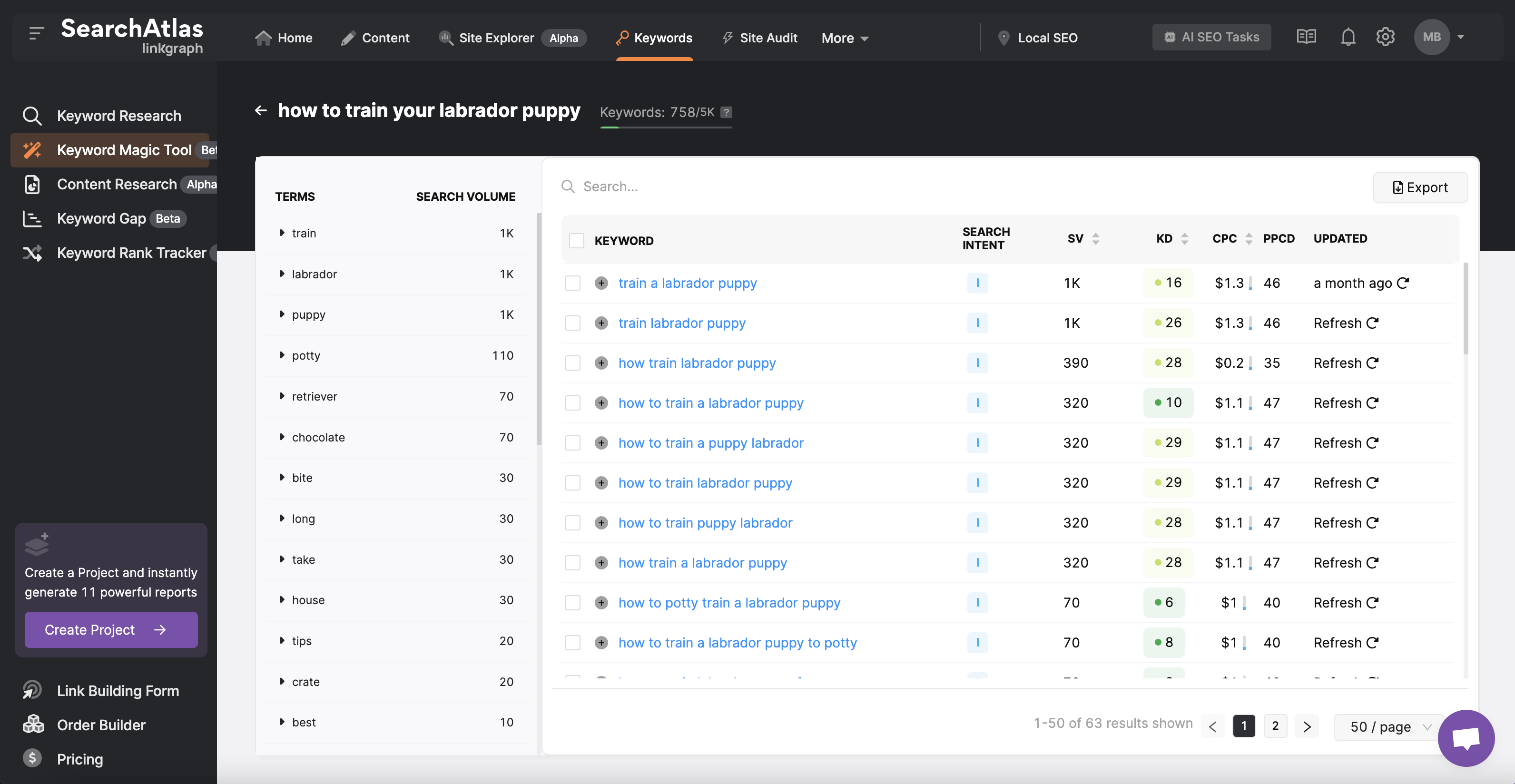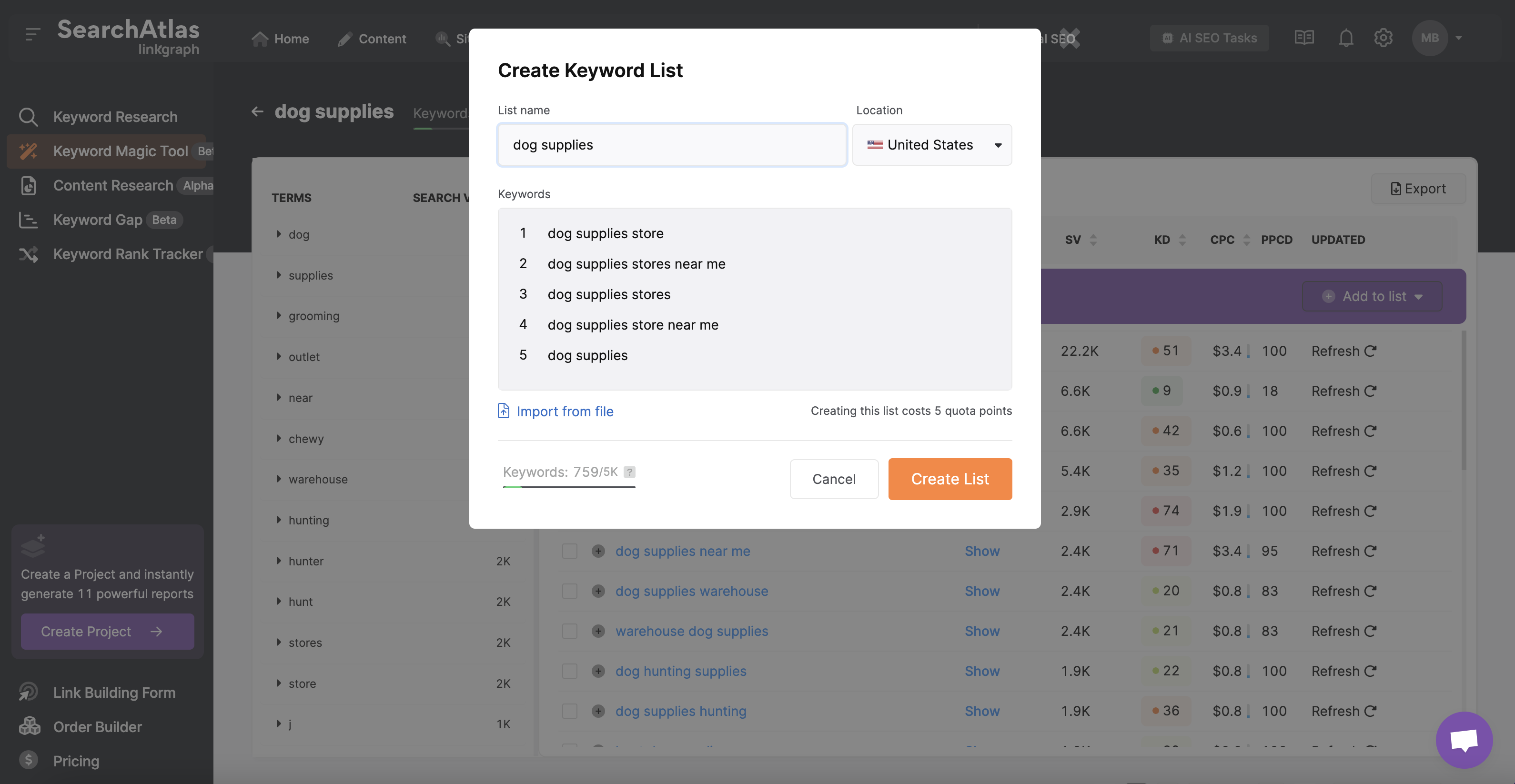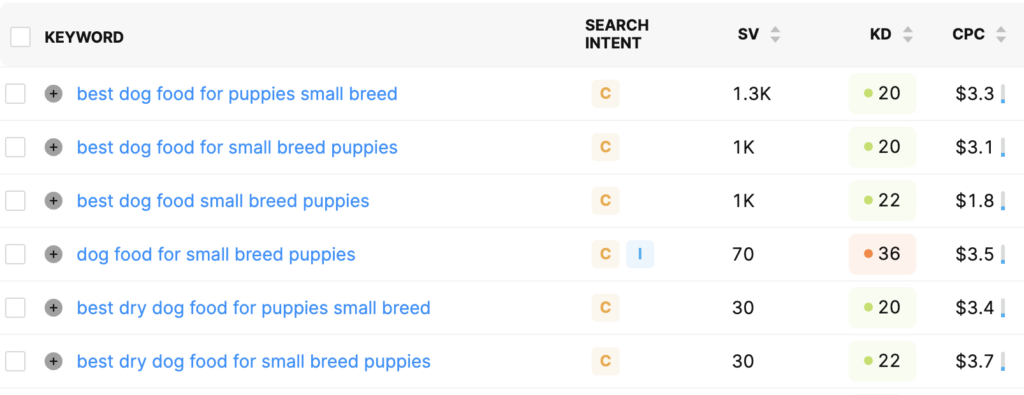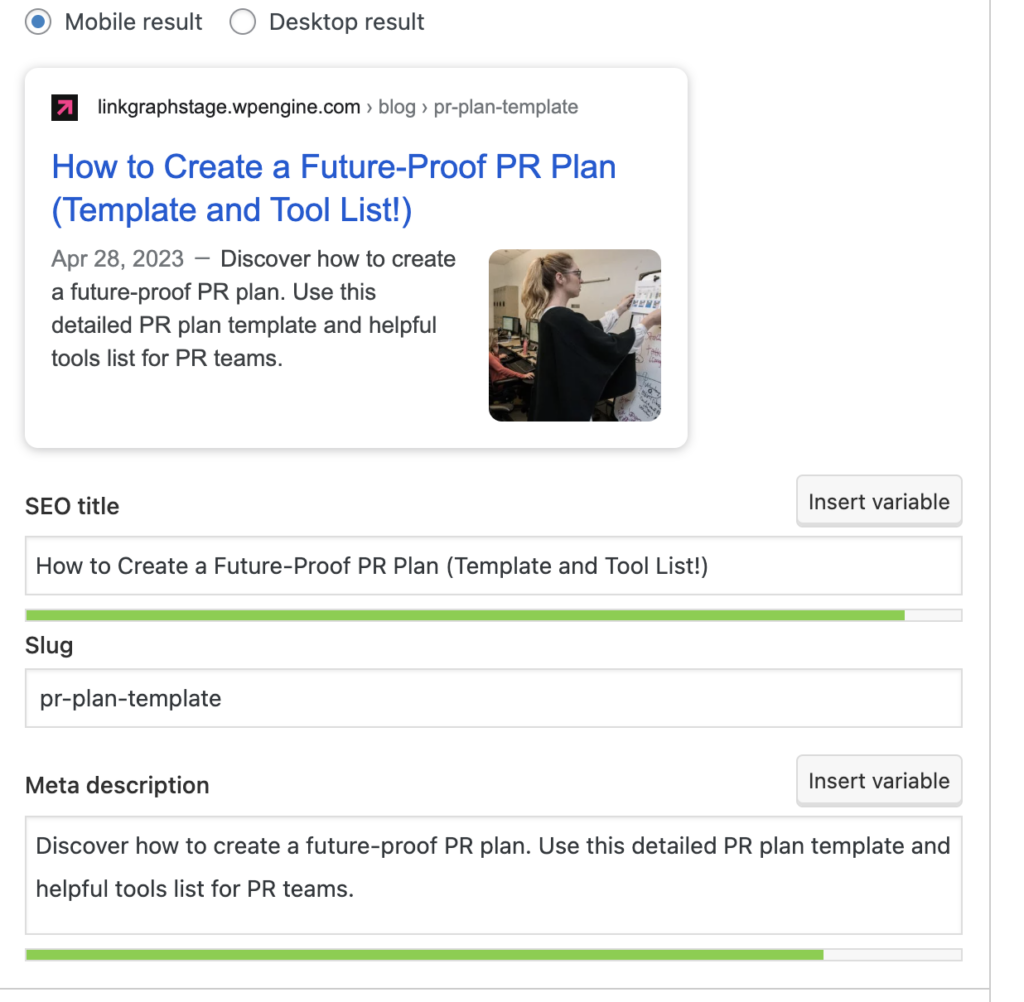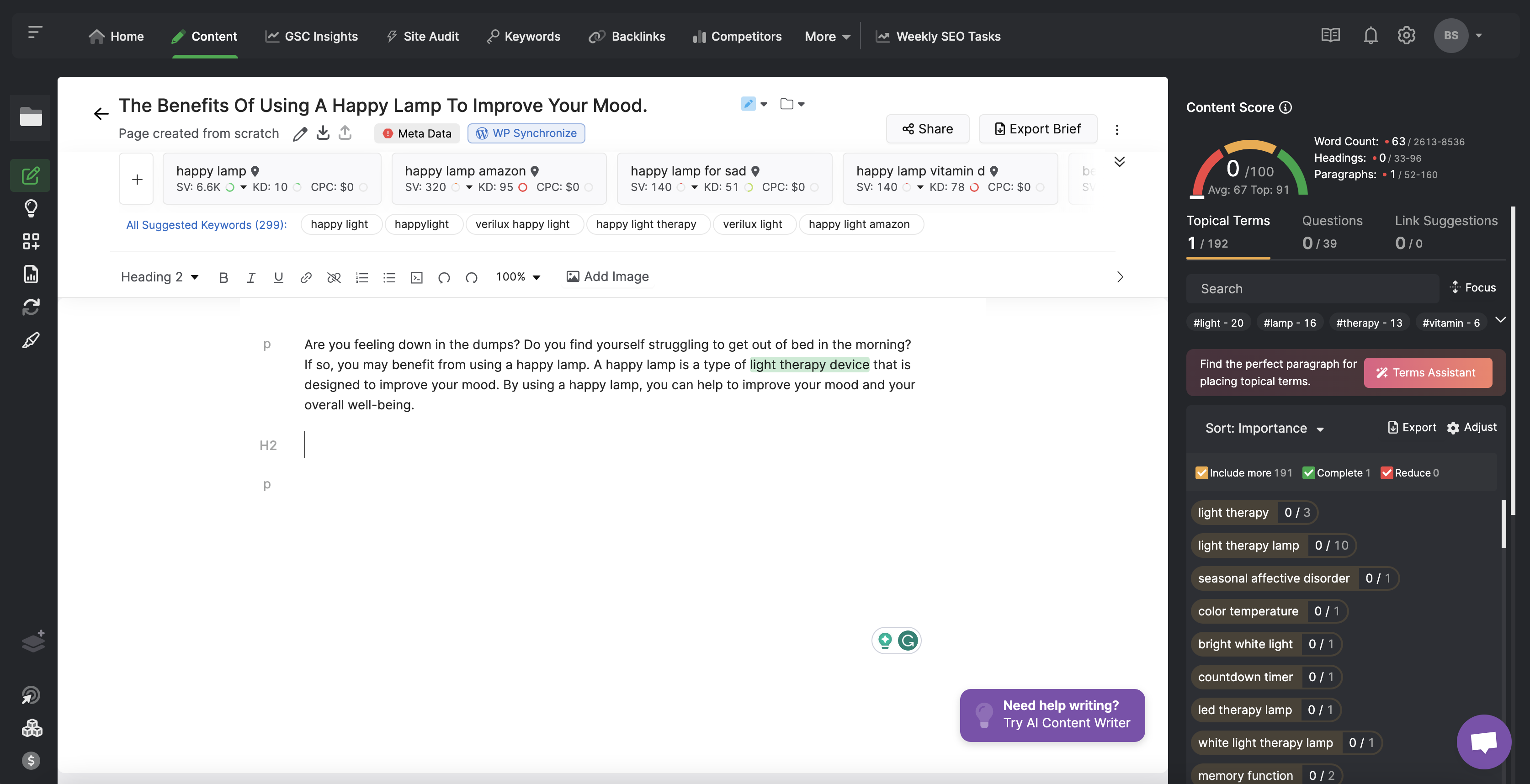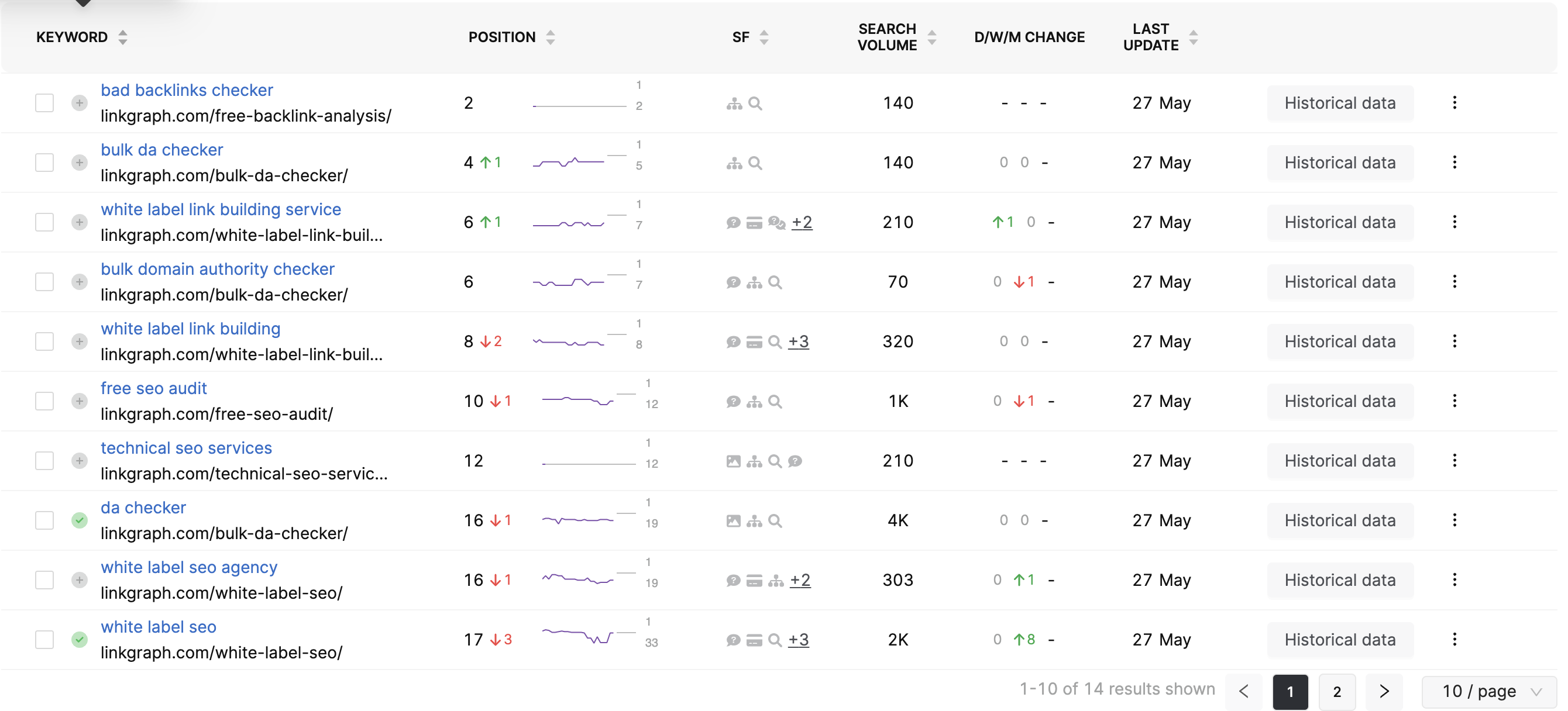What to Do After Keyword Research: 5 Next Steps
So let’s say you’ve found your ideal keywords, and now you want to know what to do after keyword research is complete. Well, you’ve come to the […]
So let’s say you’ve found your ideal keywords, and now you want to know what to do after keyword research is complete. Well, you’ve come to the right place! This post will break down the next steps in the search engine optimization process after you have your target search terms on hand.
Identifying your target keywords is only the first phase of a successful SEO strategy. In order to actually increase search traffic to your website, you’ll need to strategically include those keyword phrases in your website content in order to rank in the SERPs.
If you have not yet completed the keyword research process, make sure to visit our complete guide on finding keywords for SEO. Then, signup for a Search Atlas account to get full access to our easy-to-use keyword research tool.
What is Keyword Research
Keyword research is the process of identifying and analyzing the words and phrases that your target audience is using when searching for products and services like yours online.
By conducting keyword research, you have likely already found some keywords that you would like your website content to rank for.
Some of the key metrics you should have on hand from your keyword research include:
- Keyword Ideas: These are the keywords that you have identified as relevant to your website content
- Search Volume: This is the total number of searchers your keyword ideas receive each month from Google
- Keyword Difficulty: This is the estimated competitive difficulty to rank for a keyword. Learn more about Keyword Difficulty here.
- Cost-Per-Click: The price that advertisers are paying per click in Adwords to rank at the top of the SERP
By understanding which keywords your target audience is using to search for information, you can then create content that is more valuable and relevant to their needs.
So I Have My Keyword List…Now What?
If you’ve already gone through the work of identifying your keywords, it’s time to start the search engine optimization process.
Here are 5 next steps for how to move from your keyword list to earning real website traffic from search engines.
1. Organize your Keywords with your Website Content
To maximize the total keywords your website ranks for and earn the highest amount of organic clicks, each web page of your website should be optimized for a different keyword or keyword group.
The content should be distinct enough that Google sees the pages as different and therefore promotes the various pages for different sets of keywords.
For example, let’s say your business is a B2C business like an online dog supply store. You will want your homepage to rank for keywords that are similar to the primary purpose of your business, so keywords like “dog supplies” or “dog supplies store.”
If you do your keyword research in Search Atlas, you can easily organize similar keywords into lists, like seen below:
When it comes to how to best organize your keywords and content, here are a few tips.
Tip #1: Think About your Website’s Topic Areas
Although your website likely has a primary topic area, there are likely many different subtopics that also have relevance to your products or services.
In our example, “dog supplies,” is the primary topic area of the website. But subcategories include the many categories of products sold on the website, such as dog food, dog leashes, dog toys, dog training aids, and more.
Depending on how your category pages are set up (or if you are another type of business, you’re primary service pages) you will want to match up your keywords and your content accordingly. For example:
- https://www.dogsupplies.com/dog-food/ = “dog food brands,” “top brands dog food,” “dog food brands best”
- https://www.dogsupplies.com/dog-toys/ = “dog toys,” “good dog toys,” “dog chew toys”
- https://www.dogsupplies.com/dog-training/ = “dog training products,” “dog potty training products,” “dog training products online”
By optimizing these individual pages for the most relevant keywords, you will be promoting the pages on your website that are the most relevant to the user’s search intent.
Tip #2: Target Long-tail Keywords with Blog Content
During your keyword research, you may have noticed that there are hundreds to thousands of ways that users may be searching for products or services like yours.
For example, instead of a keyword like “hr software,” a users may use a keyword phrase like, “best hr software for mid size teams.”
Search queries like these are called “long-tail keywords,” because they are usually longer and represent users near the top of the marketing funnel. Long-tail keywords are often lower search volume, but they are often less competitive and still show strong conversion potential.
Writing and optimizing blog content is a great strategy for ranking for these types of long-tail searches. Blog content provides valuable information to users and answers their questions while still showcasing your unique products, services, or value propositions.
2. Prioritize Keywords By Value and Competitive Landscape
So which keywords on your list are the most important to target? Well, the keywords that you should be prioritizing are those that you have the greatest potential to rank for.
For example, a keyword like “dog supplies near me” is highly relevant to my dog supplies website, but it is also very competitive.
If I were a brand new website, it is unlikely I would be able to rank on the first page for this competitive search term.
So instead, a search term with lower Keyword Difficulty, but similar search intent, would give my website a better chance of ranking, and therefore driving organic clicks right away.
Although lower search volume, the lower Keyword Difficulty score means my new website has a much better chance of ranking on page 1 for this keyword. After my website increases its Domain Authority, I can target more competitive keywords at a later date.
Two other important factors to consider when prioirtizing keywords are:
- Search Intent: Transactional and commercial keywords are likely to have higher conversion potential than informational or navigational keywords, as those users are ready to buy soon, rather than informational searchers that are still in the research phase
- CPC: Cost-per-click is a good indicator of the value of a keyword. If advertisers are paying a high price to rank for a keyword in an Adwords campaign, then that keyword likely represents qualified audiences or users
3. Include your Keywords in your Website Content
Once you organize and prioritize your keywords, it’s time to include your keywords in your website content.
This process is called on-page SEO, and it involves strategically incorporating keywords and variations of your target keywords into metadata such as:
- Url slugs
- Page Titles
- Meta Descriptions
- H1s-H6s
- Image Alt Text
Google looks to these on-page elements to understand what your website content is about and when to promote it for users.
If you are using a plugin like Yoast SEO, you can easily add in your keywords to your title, slug, and meta description and also ensure optimized character length.
These elements will form the blue, clickable link of your search result and can impact your click-through-rates. Although Google may display your title tag and meta description slightly differently, it is still essential to include your target keywords in the metadata to increase ranking potential.
However, don’t overdo it on the keyword inclusion, as your content should still read naturally and proiritize bringing value to users. It’s best to include variations of your keywords, or other keywords within the same keyword cluster, rather than the same keyword again and again.
4. Optimize your Content Using a Content Optimizer
To increase the potential of ranking for your keywords, your website copy also should be high-quality, in-depth, and explore all of the various subtopics related to your keyword.
A content optimizer tool can help you create higher-quality content by suggesting key terms that you should include on the page.
When optimizing a web page, simply enter the keyword from your list and the Search Atlas SEO Content Assistant will suggest key terms, phrases, subtopics, and questions that should appear somewhere in your content.
Adding in these terms and improving your content score can mean higher rankings and better performance for your content.
In addition to focus terms, the SEO Content Assistant will also suggest:
- Related keywords: Similar keywords that you can also target in your content
- Common Questions: These are questions users are asking in relationship to the keyword. Including them on the page can increase your web pages appearances for People Also Ask or other featured snippets
- Suggested Internal Links: Other relevant pages on your website that you may want to link to. More internal links helps Google find and index your other pages and understand how your website content interrelates.
5. Track your Keywords in a Rank Tracker
After your optimized content is published live on your website and indexed by Google, you should track how your content is performing for your target keywords.
Remember that SEO does take time. If your content is properly optimized, you should start earning impressions within 1-2 weeks, however, it may be a few months before you start ranking in higher positions.
But in the meantime, use the rank tracker in Search Atlas to add keywords from your list and start tracking them.
Using a rank tracker is a straightforward process. Simply enter the keywords that you want to track, and the tool will provide you with an instant report of you current ranking positions and any changes that occur over time. This allows you to stay ahead of your competition and make data-driven decisions that boost your content’s visibility in search engine results pages.
To speed up the process of ranking on the first page, consider investing in link building services. Although high-quality, optimized content is essential to ranking for your target keywords, backlinks are also an important ranking factor.
For the best results after keyword research, consider implementing both on-page and off-page strategies!
Conclusion
Now that you know what to do after keyword research, why wait? Identifying the right keywords is an important part of the SEO process, but you will actually have to make changes and updates to your website content in order to achieve your goals of driving organic traffic.
If you need help along the way, our team at LinkGraph specializes in on-page optimization and backlink building. We can help speed up the process of ranking and getting more eyes on your website content, products, and services.










































































